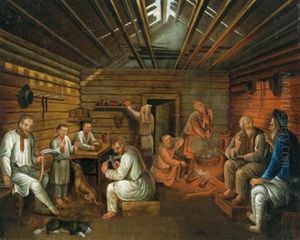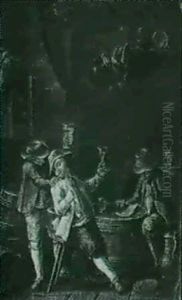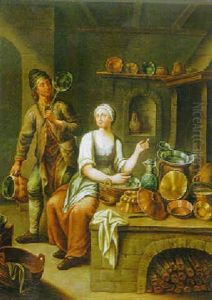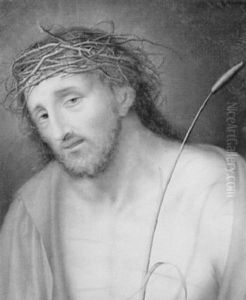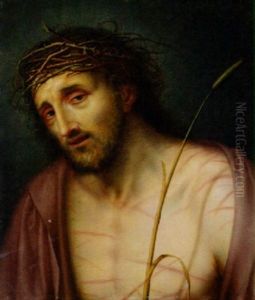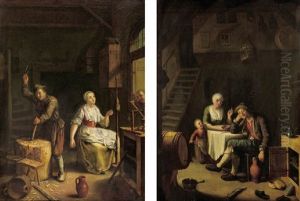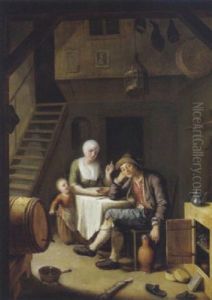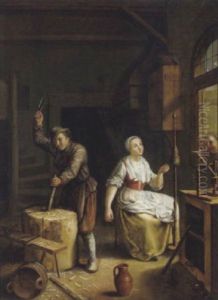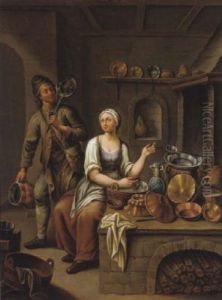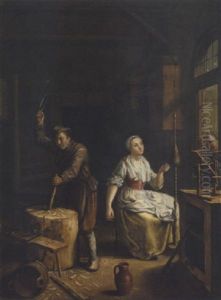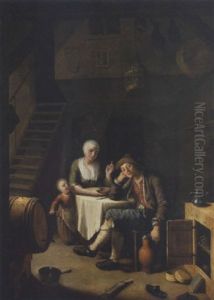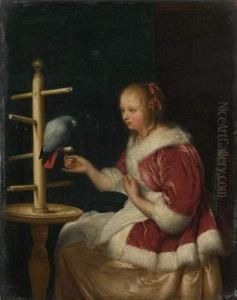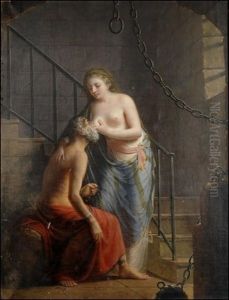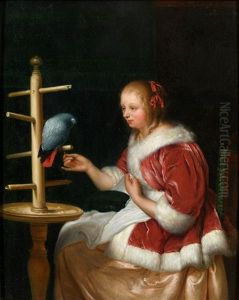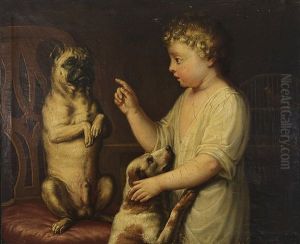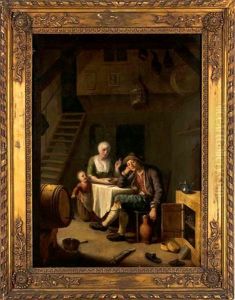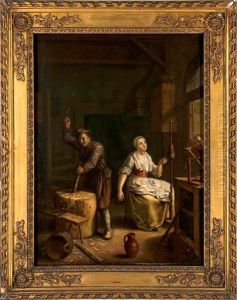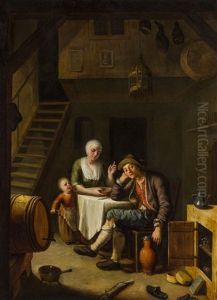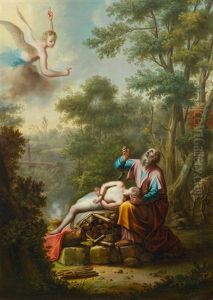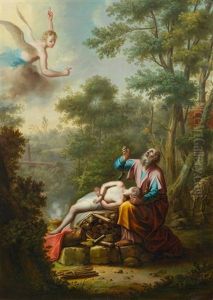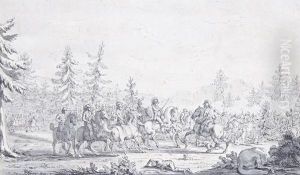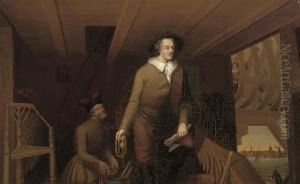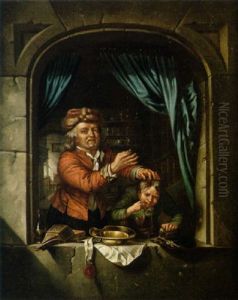Johann Jakob Mettenleiter Paintings
Johann Jakob Mettenleiter was a German artist, engraver, and painter who lived during the late 18th and early 19th centuries. Born on February 18, 1750, in Memmingen, Bavaria, Mettenleiter displayed an early talent for the visual arts. His initial training was under local artists in his hometown, where he began to develop his skills in the traditional methods of painting and engraving.
Mettenleiter's career evolved significantly after he moved to Augsburg, which was a significant center for art and culture at the time. Here, he became a student of the renowned engraver Johann Elias Haid. Under Haid's guidance, Mettenleiter honed his engraving skills and adopted the intricate techniques that characterized much of his later work.
As his reputation grew, Mettenleiter found himself working with some of the most prominent publishers and patrons of the day. He produced a wide variety of works including portraits, landscapes, and religious imagery. His engravings often featured meticulous detail and a clear, refined style that was admired by his contemporaries.
In addition to his engravings, Mettenleiter was also known for his paintings. While not as prolific in this medium, his paintings exhibited a strong command of light and shadow, which was a hallmark of the Baroque style prevalent during his time. His artworks often reflected the sensibilities of the late Baroque and early Neoclassical movements, bridging the gap between the ornate and the more restrained approaches to art that were emerging.
Mettenleiter's contributions to the world of art were not limited to his own creations. He also played a significant role in the education of future artists as a teacher, sharing his knowledge and skills with the next generation.
Johann Jakob Mettenleiter passed away on October 17, 1825, in Augsburg. Although not as well-known today as some of his contemporaries, his work remains a testament to the craft and artistry of engravers and painters of the late 18th and early 19th centuries. His legacy continues to be appreciated by art historians and collectors who recognize the skill and dedication evident in his engravings and paintings.
